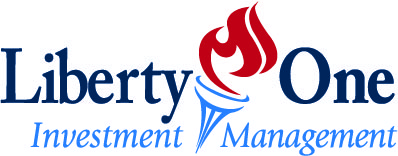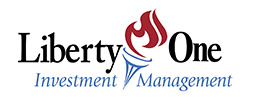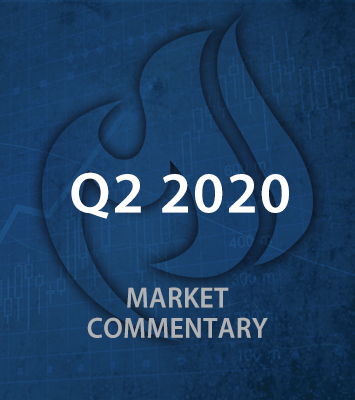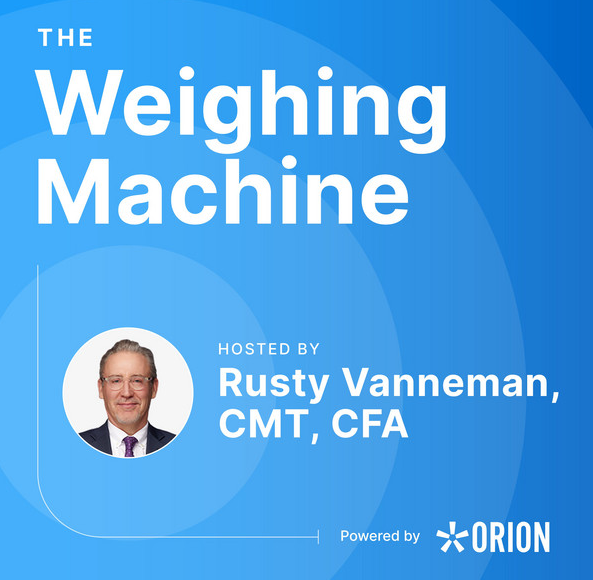In our previous commentary, we classified that the current recession was an event driven bear market that was catalyzed by the coronavirus and fueled by restrictive measures implemented to help stop the spread of the virus. References were also made that the stock market is forward looking and usually requires some light at the end of the tunnel (for this instance, medical progress or signs of the economy re-opening) for it to recover, and recover quickly. During the second quarter, the stock market advanced at its fastest pace in history, driven by greater optimism of a phased re-opening of the economy, medical progress, and massive support from both monetary and fiscal policies. As of market close on June 30th, the S&P 500 have recovered 38% from its March 23rd trough, resulting in erasing almost all losses experienced in the first quarter. The market recovery in the second quarter marked the fastest recovery in history within a 3-month span. Figure 1.1 below puts it into perspective the time it takes to generate such performance from the trough of a recession.
Figure 1.1

Although it may be pre-mature to call March 23rd the trough of the bear market at this time, re-testing March’s lows would require significant regressions in the progress we’ve made thus far, coupled with a reluctance of further government support. We believe this scenario is highly improbable given the speed and magnitude in which governments acted during the onset of the crisis as well as 2020 being an election year in the United States. Moreover, after witnessing the economic carnage brought upon by the stringent measures implemented to mitigate the virus spread earlier this year, it is also unlikely that governments would allow their economies to fall back into full lockdown mode (absent of another uncontrolled outbreak) but would much rather slow the pace of re-opening plans and take a much more cautious approach. This internal struggle between saving lives and livelihoods will continue dominate the process at which governments weigh their re-opening or lockdown options.
Is the Market Getting Ahead of Itself?
Contrasting the stock market’s incredible run in the second quarter to the lack of developments of the same magnitude in the fundamental economy warrants a question as to whether the stock market is getting ahead of itself. Although this is certainly a major risk to consider and has been on the minds of investors, there are possible explanations that may justify the swift rise of the market, as well as potential risks to be mindful of from where we stand today.
Actions by the Fed to keep interest rates low and providing ample liquidity through its balance sheet expansion while maintaining transparency of its action is an environment supportive of risk-bearing assets. The intention of the Fed to keep rates lower for longer especially in an environment that lacks inflation results in lower expected volatility that lends well to a “hunt for yield” environment. Given the relative attractiveness of stocks to bonds at current interest rate levels fueled by higher dividend yields relative to bond yields, appreciation potential from the reinvestment of undistributed profits, and a more attractive risk premium could incentivize investors to favor equities in their portfolios. Such demand has the potential to increase valuations until the relative attractiveness of stocks dissipates.
Additionally, the market seems to be more concerned about the rate of improvement than the level of improvements in the economy. Figure 1.2 below illustrates an example of such development. Although the level of initial jobless claims is much higher than in previous recessions, the rate of improvement we are seeing from the continuous decline in weekly jobless claims throughout the second quarter is certainly positive despite the cumulative level of claims increasing. Fundamental improvements in the economy ranging from the labor market to manufacturing activity have improved since the lockdown began and have been mainly supported by massive fiscal stimulus that helped keep the households and businesses afloat. The notion that part of the existing fiscal stimulus package have expiration dates and are coming due create anxiety over whether households and businesses can remain solvent. However, as we noted earlier, the thought of a deterrent government seems improbable should conditions fail to improve, and we would expect the Treasury department to initiate another round of stimulus if necessary.
Figure 1.2
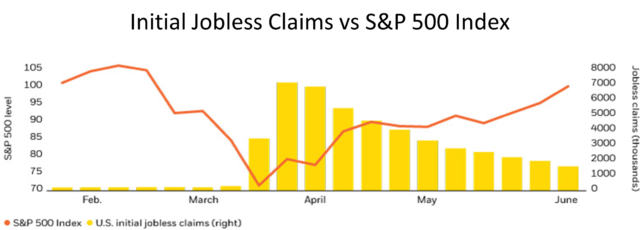
Finally, as markets look forward to future corporate earnings prospects, discounting future earnings growth at today’s low rates may also justify higher current valuation that was evident in the Q2 market performance. In our view, corporate earnings are unlikely to return to pre-crisis levels until late 2021 or early 2022 but the long-term corporate earnings growth trend remains intact. The current crisis is unlikely to permanently reduce aggregate corporate earnings below its historical norms because the economy continues to be diverse and innovative. Market leadership may have changed due to the crisis in favor of technology firms, but long-term corporate earnings are expected to recover beyond pre-coronavirus levels at some point in the future.
Figure 1.3
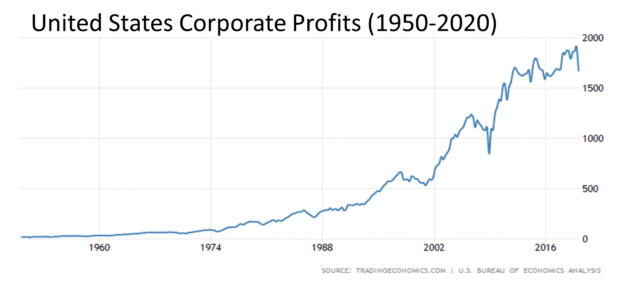
Nonetheless, markets have indeed moved very fast and very far, which warrant a greater deal of caution and skepticism. An abundant of risks remain with regard to another uncontrolled outbreak, increasing geopolitical tensions with China, volatility prior to a Presidential election, increased debt levels for both corporations and governments, near-term impact to profit margins, elevated absolute valuations, and other potential hidden vulnerabilities.
Looking Ahead
The current crisis has introduced several dislocations in the economy that might have long-term implications on the global economy. Firstly, the acceleration of digital adoption due to this pandemic only serves to advance the digital trend coming into 2020 across all segments of the economy. Markets may also be pricing in such dislocations as evident in the diverging stock performances between companies that would benefit and ones who will struggle from such trends.
Another long-lasting effect emphasized by this crisis is the stage of de-globalization. For many years, companies would choose the cheapest place to manufacture their products while building long supply chains to get the finished product to the end user. This is because for most companies, most of their end users reside outside the manufacturing country.
The current crisis introduced vulnerabilities in these existing supply chains where companies are beginning to evaluate the tradeoff between cost and reliability. A shift towards more reliable supply chain policy along with greater protectionist measures by governments would have large implications on globalization and global growth.
These trends should favor domestic stocks as opposed to international stocks that are more reliant on export-driven growth. The threat of de-globalization is a headwind for emerging markets, but their attractive valuations, yields, and demographic advantages make a strong argument for some inclusion in investors’ portfolios. Small cap and mid cap stocks should outperform coming out of a recession if economic conditions continue to improve in the second half of the year. The dispersion in returns between value/cyclical and growth/defensive stocks create attractive opportunities to pick up undervalued value/cyclical names with strong businesses that could benefit from an improvement in economic conditions. However, a prolonged low interest rate environment and higher probabilities of value traps in today’s environment warrants additional caution and selectiveness within the space.
Figure 1.4
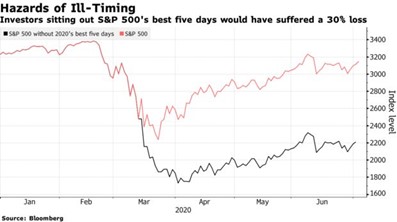
In summary, the second half of 2020 is shaping up to be another eventful period in financial markets. Volatility is expected to continue, and a lot of uncertainty remains. In such an environment, investors are encouraged to maintain sound emotional and investing discipline. The cost of trying to time the market in a volatile environment could be detrimental. Had investors missed out on the 5 best trading days of 2020, they would have suffered a 30% loss at the end of June vs a 3% loss had they remained in the S&P 500 throughout the bear market. In retrospect, this may be easy to do but hard to execute. As investors, we must be mindful that sometimes, the biggest enemy to the success of our portfolios lies within ourselves, and not the investments
that we invest in.
